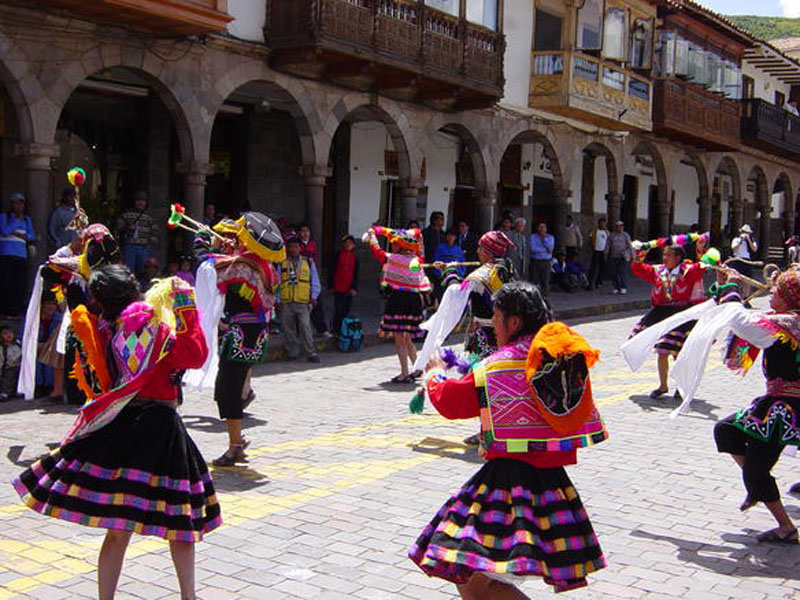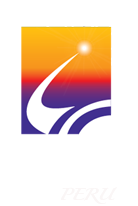

Some Tips to get the most out of your travel.
When you decide to visit a new city, country or region and want to get to know the place; put aside the isolation and defensive attitude. Let the sights and sounds sink in and think of the local people as an opportunity, not an inconvenience.
Find opportunities to mix with the people and visit the local markets where food and other necessities are sold and not just souvenirs. Appreciate the differences in climate, culture, costumes and customs that make this a different place. You will return home with memories and experiences that last a life time. A person more aware and appreciative of customs, beliefs and appearances of other cultures, peoples and the delicate balance and beauty of our planet.
On the links and resources page are useful links to help you prepare for your trip with passport information, health concerns and preparation, plus a currency converter.
Click on photo-tips to help you record your experiences in Peru.
Before traveling on a program with us you will recieve a complete pre-departure package.
Entry Requirements: Citizens of the United States require a passport valid for at least six months beyond the anticipated return date. Visas are not required for US citizens traveling for tourist purposes on limited stays. It is the passengers' responsibility to obtain passports and any necessary visa and health documentation required by the country they wish to enter. On the links and resources for travel to Peru you can find information on acquiring a passport and visa.
Departure taxes: When you leave the
country you will have to pay an airport departure tax in the amount of
$30 (at the time of
this writing). This will be paid after you have checked in for your flight
either at the Banco de la Nacion. The system has been changing
recently, but your local transfer person will both advise and assist you.
Payment of departure taxes in Lima can only be made
in US dollars.
You are also subject to departure taxes for domestic flights
to/from Cusco, Puerto Maldonado, Juliaca, Arequipa and other cities within
Peru. These fees usually amount to $4-5 (except in Cusco where the fee is
$5 and can be paid with any excess Nuevos Soles that you
might have or in US dollars. Therefore for you should have about
$35 set aside to cover these taxes. Due to the lack of hard currency in Peru,
it is a good idea to always have an extra stash of $20-30 US dollars in small
denominations in reserve in the event that you are required at the last minute
to pay any of these taxes in US dollars. If you pay a $4.00 local airport
tax with a $20 dollar bill, you will receive your change at a poor exchange
and in Nuevos Soles.
Currency, Exchange, Banks and Credit Cards: The Peruvian currency is the Nuevo Sol. Its is abbreviated as S/ many establishments, private persons will accept US dollars for their transactions. The rate of exchange fluctuates daily. Money can be changed at the airport, in most banks and casa de cambio. Hours are usually from Monday to Friday 9 am to 5 pm or from 10am to 6pm. International credit cards are accepted by most restaurants, hotels and major stores. Any U.S. dollars you bring into Peru should be clean, new and crisp dollars as they are suspicious of old bills. You can go to your bank to exchange the old bills for new.
If you wish to have some Peruvian currency before arriving in Lima, exchange
only a small amount at your local bank, as the rate you
will receive is quite a bit lower than what you’ll get incountry, and
it is not necessary to have any Nuevos Soles when you arrive. We
recommend carrying $50-80 cash in smaller denomination bills such as $I’s,
$5’s, & $10’s as these are readily accepted when you don’t
have the local currency. A passport carrier worn under the clothes is important
for carrying any spending money you’ll have (or you
can use buttoned front shirt pockets or an inside zippered jacket pocket),
and please use the security box at the hotels for protecting
additional funds you are not carrying with you. Credit cards are commonly
used, we suggest carrying one with a relatively high limit for
emergency purposes such as new airline tickets, etc.
Weight allowances: We recommend that you travel as lightly as possible since
very heavy bags or too many pieces of luggage are
difficult to handle and keep track of. Also, the space on our vehicles is
fairly limited. Your international baggage allowance Is generally 2
pieces of luggage, each weighing not more than 32 kilograms or about 70 pounds,
plus a carry-on, but you should generally be able to
get by with one large duffle bag or suitcase and your daypack. The luggage
space on internal flights is limited to two checked bags with
a total weight of 23 kgs. and one carry-on plus a personal item.
Weather: There are no intermediate seasons in Peru, and one can encounter winter or summer conditions depending on the area visited. The highlands have dry and sunny weather the year round. The nights are cold and the temperature varies according to the altitude. The rainy season is from December to March, which are also the warmest months and winter is from June to August.
The Peruvian coast has very mild weather and it hardly ever rains. The rainforest and Amazon flood plains are hot, from 30 to 35 degrees C from December to April.
Time: Jet lag is generally not a problem when traveling
to Peru as the country is 5 hours behind Greenwich Mean Time, making it
the
same as Eastern Standard Time. Due to its location near the equator, the
country experiences days and nights of approximately equal
length year round with sunrise at about 06:30 and sunset at 18:30.
Local Calls: Remember, when placing a call in the same city you do not need to dial the area codes written in parentheses (the first is the country code and the second the city code). For making an lnternational call to Peru both of these must be included before the local number.
Electricity: The voltage is 220, 60 cycles, except Arequipa which is 50 cycles. A few major hotels in Lima have 110 volts outlets as well.
Clothing: When it is winter in the USA and Europe it is summer in Peru. In the highlands, when it is sunny during the day one should dress lightly but carry something to cover up in the shade. At night you will need a jacket because it can become cool according to the altitude. In Lima, during the winter time (June to August), you will need a sweater or jacket.
Vaccinations: No vaccinations are required to enter Peru. However, travel to the Amazon requires malaria and yellow fever vaccinations. There is a travel link to CDC for current travel requirements under links and resources on this website.
Identification precautions: We suggest making 3 photocopies of your passport and driver’s license (the latter you do not have to bring with you). Keep one at home and carry the others with you for identification purposes and as an aid in obtaining a new passport in the unlikely event that yours is lost. We strongly recommend the use of a passport carrier worn around the neck under your clothes or on the leg under your trousers or skirt as a precaution against loss or theft (it can also be used to carry your money in), as well as the use of safety deposit boxes at your various hotels.
Taxi fees: should be approximately US$15-20 in Lima and $5-10 in Cusco.
Shopping: Peruvian handicrafts include its famous gold and silver jewelry, textiles, leather, pottery and wood carving, folk art, alpaca wool sweaters and other alpaca items.
US Customs: You may bring up to $400 per person worth of Peruvian handicrafts
and gifts back to the United States duty free. It is
illegal to take artifacts older than 50 years out of Peru without a permit,
so if you purchase a reproduction of any pre-colombian or
colonial object be certain you have a receipt to show the customs inspector.
Should you need further information regarding customs,
the publications #506 “US Customs Pocket Hints” and #512 “Know
Before You Go” are both helpful and are available at no cost from
the Department of Treasury, US Customs Service,Washington, DC, 20229.
Avoid getting sick in Peru:
Do not drink tab water
Do not eat salad and only eat fruits that you peel yourself.
Only eat thoroughly cooked food
Do not drink beverages with ice
Do not swim in standing waters
Avoid dairy products
Adjusting to the altitude:
Most people will find that they need 2-3 days to gradually adjust to the
higher elevations found in the Peruvian Andes (especially those
currently residing at sea level). Our advice to help you acclimate better
is:
1). Take it - easy your first days. Walk slowly and use your free time to relax.
Take a nap in the afternoon (it is normal to feel tired or
sleepy at this elevation).
2). Drink as much water and non-alcoholic fluids as possible. 11/2 liter
bottles of San Luis Agua Mineral water are available for a couple
of dollars from small supermarkets or grocery stores in Cusco. We recommend
purchasing a couple of bottles and drinking them your
first day (staying near the hotel to use the restrooms!). Also, drink several
cups of coca tea as many people swear to its effectiveness at
reducing the symptoms of mild altitude illness and it is a non addicting
herbal tea.
3). Eat lightly. Higher altitudes slow down your digestion so soups, salads,
rice and similar items are recommended for lunch and dinner
the first day or two.
4). Avoid alcohol the first couple of days.
5). For those that know from prior experience that they react strongly to the
change in elevation we recommend preparing your body by
visiting higher elevations in the USA shortly before your trip.
Many travelers inquire about the use of the drug, Diamox, which is highly
effective at relieving the symptoms of altitude illness by
reducing pressure in the vascular system. Its use in the past has typically
recommended in climbing situations and emergencies or
medical evacuations. We strongly suggest that you consult with a physician,
experienced in high altitude medicine, and use his/her advice with regards
to using Diamox on any of our programs. Diamox must be taken days before you
leave on your tour and continued during your tour.

Cultural Expeditions Peru offers:
Customized travel packages to Peru with predeparture information and travel tips.
Tips for traveling Peru's adventure trips, Spanish and Andean history, archaeology, arts and culture.
Travel vacations tailored to your interests with scholarly knowledgeable trip leadership.